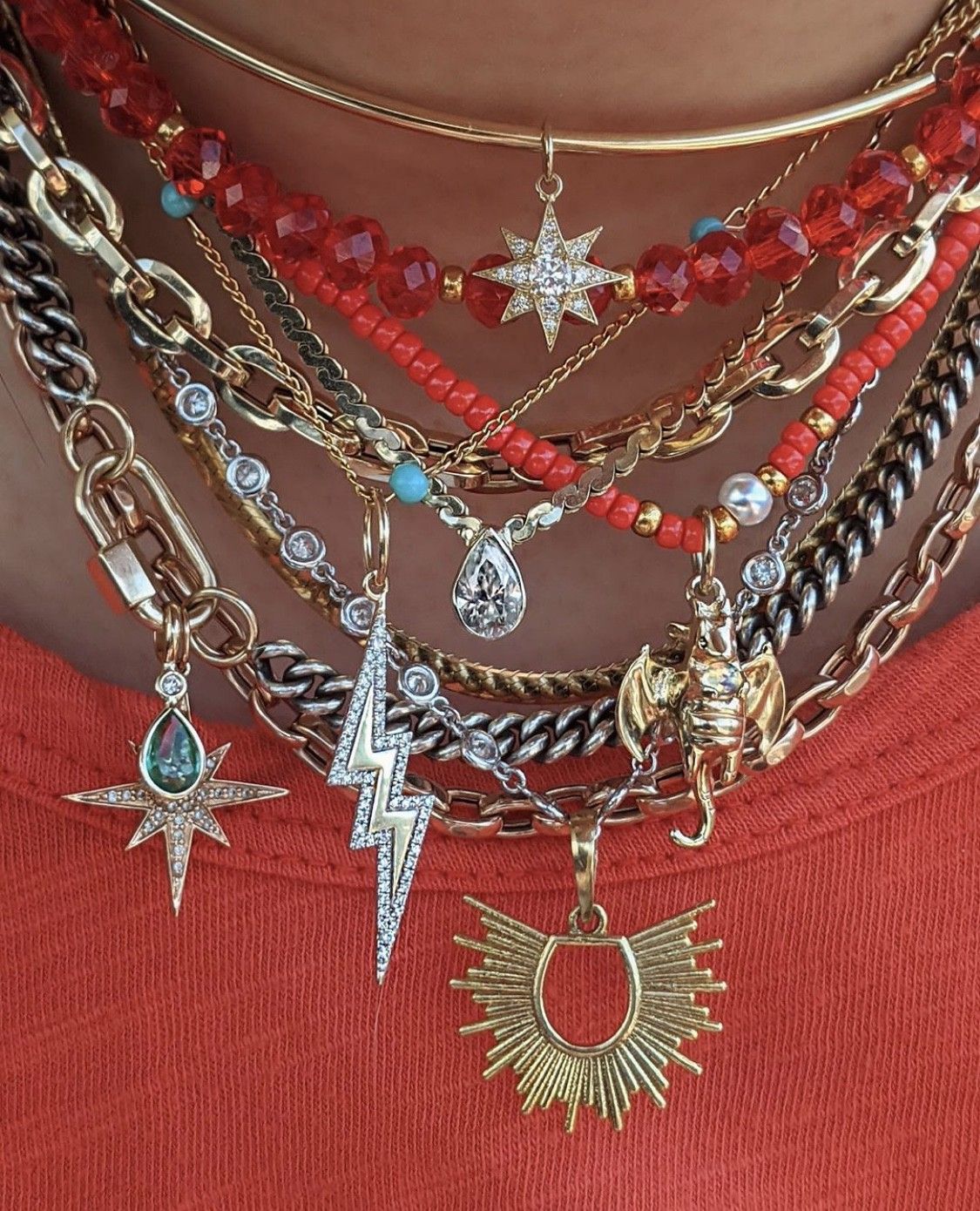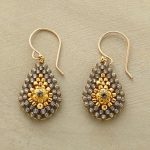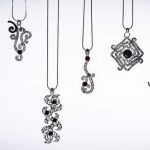Glass jewelry has a rich history, dating back to ancient cultures and civilizations. From its earliest origins to its modern-day revival, glass jewelry has been prized for its beauty, elegance, and versatility. This article will explore the fascinating history of glass jewelry, from its ancient origins to the contemporary designs and trends shaping the industry today.
The use of glass in jewelry making can be traced back to ancient times, with evidence of glass beads and ornaments dating as far back as 2500 BC. Throughout history, glass has been valued for its vibrant colors and ability to mimic precious gemstones. The ancient origins of glass jewelry set the stage for its enduring appeal and significance in the art of adornment.
During the Renaissance period, there was a resurgence in the use of glass in jewelry making, with artists and craftsmen exploring new techniques and intricate designs. Glass jewelry became synonymous with luxury and sophistication, with intricate patterns and vibrant hues capturing the essence of this artistic era. The Renaissance marked a turning point in the evolution of glass jewelry, paving the way for future innovations and developments in design.
Ancient Origins
Glass jewelry has a long and rich history dating back to ancient times. The use of glass in jewelry making can be traced back to as early as 3000 BCE in ancient Mesopotamia and Egypt. It is believed that the earliest form of glass used in jewelry was in the form of beads, which were crafted using a technique known as “core forming” where a core of clay, dung, or sand was coated with colored glass to create intricate designs.
The Egyptians were particularly skilled in the art of glassmaking and their expertise spread throughout the Mediterranean region. Glass beads have been found in tombs dating back to the ancient Egyptian civilization, highlighting the significance of glass jewelry as both a decorative and symbolic element in their culture.
In addition to beads, the Romans also utilized glass to create intricate mosaics and cameos for adornment. Glass jewelry became a popular choice among the wealthy elite during this time, showcasing the craftsmanship and artistry of ancient artisans. This period laid the foundation for the continued evolution and innovation of glass jewelry making techniques throughout history.
| History | Details |
|---|---|
| 3000 BCE | Use of glass in jewelry making dates back to this time period |
| Egyptian Civilization | Expertise in glassmaking spread throughout the Mediterranean region |
| Roman Empire | Glass utilized for creating intricate mosaics and cameos for adornment |
Glass Jewelry in the Renaissance
During the Renaissance period, there was a resurgence of interest in the arts and creativity, which also extended to jewelry making. The nobility and wealthier classes were patrons of the arts, and this led to a renewed appreciation for glass jewelry as a symbol of elegance and intricacy.
Revival of Glass Techniques
During the Renaissance, there was a revival of ancient glass-making techniques, such as millefiori and filigree work. These intricate techniques allowed artisans to create stunning glass jewelry pieces that showcased vibrant colors and delicate details. Glass beads, pendants, and brooches became popular accessories among the elite class, incorporating elements of sophistication and luxury into their attire.
Influence of Religious Symbolism
Religious themes heavily influenced art during this period, and glass jewelry was no exception. Many pieces featured religious symbols such as crosses, saints, and biblical scenes. The use of glass in these religious-themed pieces added an ethereal quality to the jewelry, enhancing its spiritual significance to the wearer.
Connection to Trade Routes
The Renaissance era also marked an expansion in trade routes, allowing for the importation of exotic materials from distant lands. This influx of new materials inspired artisans to experiment with incorporating gems, precious metals, and intricate glasswork into their designs. The resulting fusion of different cultural influences contributed to the diversity and richness of Renaissance glass jewelry.
The history of glass jewelry during the Renaissance period reflects a time when craftsmanship reached new heights, elevating glass as a material fit for royalty and aristocracy. The era’s emphasis on elegance and intricacy laid the foundation for future innovations in glass jewelry design that continue to inspire contemporary artisans today.
The Art Nouveau Movement
Glass jewelry experienced a resurgence during the Art Nouveau movement of the late 19th and early 20th centuries. This period was characterized by a celebration of nature, innovative design, and intricate craftsmanship. Art Nouveau glass jewelry became a symbol of creativity and innovation, reflecting the desire for unique and expressive pieces.
The Art Nouveau movement greatly influenced the design and production of glass jewelry. Artists and designers drew inspiration from natural forms such as flowers, insects, and animals, incorporating them into their glass creations. The use of vibrant colors and organic shapes distinguished Art Nouveau glass jewelry from traditional styles, making it highly sought after among fashionable individuals.
One of the most notable aspects of Art Nouveau glass jewelry was its emphasis on experimentation and unconventional materials. Designers embraced new techniques for working with glass, such as using iridescence to create a sense of opalescence in their pieces. This avant-garde approach to jewelry making set the stage for future innovations in the industry, solidifying glass as a valuable medium for artistic expression.
The Art Nouveau movement not only revolutionized the design of glass jewelry but also elevated its status within the realm of decorative arts. By placing an emphasis on creativity and individuality, this period laid the groundwork for contemporary glass jewelry designers to continue pushing boundaries and redefining what is possible with this versatile material.
As we look to the future, we can expect to see continued exploration of traditional techniques combined with modern designs, further propelling the artistry and innovation of glass jewelry.
| Art Nouveau Glass Jewelry Highlights | Key Characteristics |
|---|---|
| Nature-inspired motifs | Emphasis on vibrant colors and organic shapes |
| Experimental techniques | Incorporating iridescence for opalescent effects |
| Elevation of status | Shifted perception towards glass as a valuable artistic medium |
The Influence of Modernism
The 20th century marked a significant period in the history of glass jewelry, as it saw the influence of modernism shaping the industry in new and innovative ways. With the rise of technological advancements and changing artistic movements, glass jewelry underwent a transformation that reflected the spirit of the times. During this era, glass jewelry evolved to incorporate bold designs and experimental techniques that pushed the boundaries of traditional craftsmanship.
Some key developments in the history of glass jewelry during the 20th century include:
- The advent of modernist design principles, such as minimalism and abstraction, which influenced the aesthetic of glass jewelry
- The introduction of new materials and production methods, allowing for greater creativity and versatility in glass jewelry design
- The impact of major art movements, such as Cubism and Abstract Expressionism, on the conceptualization and creation of glass jewelry
In addition to these influences, the 20th century also saw a growing interest in mass-produced glass jewelry, as advancements in manufacturing made it more accessible to a wider audience. This shift towards democratization brought about a new wave of designs that catered to diverse tastes and lifestyles.
Overall, the influence of modernism during the 20th century played a pivotal role in shaping the trajectory of glass jewelry, paving the way for experimentation and innovation that continues to inspire contemporary designers today. It is through this lens that we can appreciate how history has shaped not only our understanding but also our appreciation for this unique form of wearable art.
Contemporary Glass Jewelry
Revival of Traditional Techniques
In recent years, there has been a renewed interest in traditional glass-making techniques such as lampworking, fusing, and blowing. Artisans are rediscovering these age-old methods and applying them to create contemporary jewelry that pays homage to the rich history of glass jewelry making. By embracing these traditional techniques, artists are able to infuse their pieces with a sense of authenticity and cultural significance, making them stand out in an increasingly mass-produced market.
Modern Design Innovations
While traditional techniques form the foundation of contemporary glass jewelry, modern designers are also pushing the boundaries with innovative designs and materials. From bold statement pieces to delicate and intricate creations, contemporary glass jewelry showcases a wide range of styles that cater to diverse tastes. Incorporating elements such as mixed metals, unconventional shapes, and vibrant colors, these modern designs offer a fresh take on glass jewelry that appeals to a new generation of collectors and enthusiasts.
Sustainability and Ethical Practices
In addition to embracing tradition and innovation, contemporary glass jewelry makers are also prioritizing sustainability and ethical practices in their work. Many artisans are mindful of the environmental impact of their craft, opting for eco-friendly materials and production processes.
Furthermore, there is a growing emphasis on fair trade practices and supporting local communities where glass-making traditions have thrived for centuries. As consumers become more conscious about the origins of their purchases, contemporary glass jewelry makers are championing transparency and ethical responsibility in the industry.
Famous Glass Jewelry Designers
Glass jewelry has a rich history that dates back to ancient times. Throughout the centuries, many skilled artisans and designers have made significant contributions to the development and popularity of glass jewelry. These influential artists have created stunning pieces that have become iconic in the world of fashion and design. Below are profiles of some famous glass jewelry designers who have left a lasting impact on the industry:
1. Dale Chihuly: Dale Chihuly is known for his intricate and colorful glass sculptures, including breathtaking chandeliers, large-scale installations, and delicate glass jewelry. His work often features vibrant, organic forms that showcase the natural beauty of glass. Chihuly’s innovative use of color and shape has redefined traditional notions of what glass art can be.
2. René Lalique: René Lalique was a pioneering figure in the Art Nouveau movement, creating exquisite glass jewelry and decorative objects during the late 19th and early 20th centuries. His designs often incorporated elements from nature, such as flowers, insects, and mythical creatures, capturing the essence of the Art Nouveau aesthetic. Lalique’s work continues to inspire contemporary glass jewelry designers with its timeless elegance.
3. Lino Tagliapietra: Lino Tagliapietra is a master glassblower known for his exceptional skill and technical expertise in working with glass. His sculptural glass vessels and jewelry designs are celebrated for their flawless craftsmanship and innovative use of traditional Venetian techniques. Tagliapietra’s contributions to the world of contemporary glass art have earned him global recognition as a leading figure in the field.
These three influential artists have played a significant role in shaping the history of glass jewelry through their groundbreaking designs and artistic vision. Their work continues to inspire new generations of designers to push the boundaries of what is possible with this versatile material, ensuring that the legacy of glass jewelry remains vibrant and relevant in the modern era.
The Future of Glass Jewelry
In conclusion, the history of glass jewelry has been a fascinating journey through time, from its ancient origins to its resurgence in modern designs. The beauty and elegance of glass have captivated artisans and wearers alike for centuries, making it a timeless material for creating stunning pieces of jewelry.
As we look to the future of glass jewelry, there are exciting trends and innovations emerging in the industry. Designers are continuing to explore the revival of traditional techniques while incorporating modern elements to create unique and contemporary pieces. With advancements in technology and techniques, the possibilities for glass jewelry are endless, offering new opportunities for creativity and innovation.
The influence of famous glass jewelry designers has also played a significant role in shaping the industry, paving the way for future generations of artists to push boundaries and redefine what is possible with this versatile material. As we move forward, it is clear that glass jewelry will continue to evolve and inspire, with trends reflecting an appreciation for both tradition and cutting-edge designs.
Indeed, the future looks bright for glass jewelry as it continues to make its mark in the world of fashion and accessories.
Frequently Asked Questions
When Was Glass First Used in Jewelry?
Glass has been used in jewelry for centuries, with evidence of glass beads dated back to around 3000 BC in ancient Mesopotamia. The Romans also used glass extensively in their jewelry.
Is Glass Jewelry Valuable?
The value of glass jewelry can vary depending on factors like the maker, age, and quality of the piece. While some glass jewelry may be valuable due to its craftsmanship or historical significance, others may be more affordable.
Why Can’t Roman Glass Get Wet?
Roman glass cannot get wet because it is incredibly fragile and susceptible to damage from moisture. Exposure to water can cause the glass to deteriorate and lose its iridescence, so it must be handled with care and kept dry.

Welcome to my jewelry blog! My name is Sarah and I am the owner of this blog.
I love making jewelry and sharing my creations with others.
So whether you’re someone who loves wearing jewelry yourself or simply enjoys learning about it, be sure to check out my blog for insightful posts on everything related to this exciting topic!





